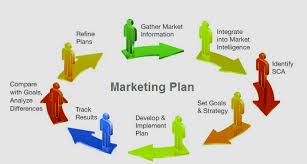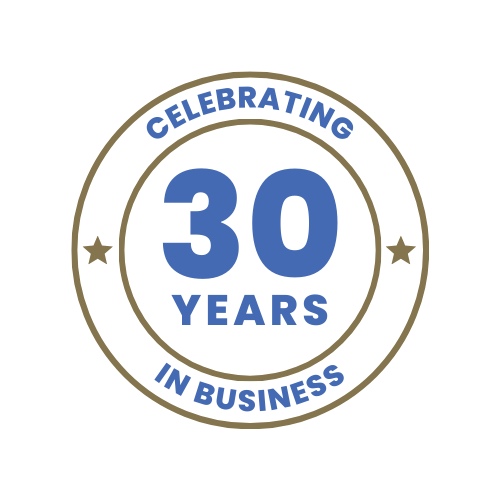Why a Market Plan and How to Use the Market Plan
- By geff@wsielevateddigital.com
- •
- 02 Jun, 2018
- •

A disciplined market planning process has two main components, development of the Marketing Background and the written Market Plan. For the sake of simplicity, both sections can be included in one document even though the Marketing Background is frequently developed and documented separately. The Market Plan can then serve as a reference for both historical marketing information and future-oriented market planning efforts.
The Marketing Background provides a quantitative and qualitative decision-making base for the Market Plan. It provides a framework for all strategic marketing decisions that are developed within the plan. The information collected for the Marketing Background should be reviewed and updated at least annually as part of the normal business planning process.
The Marketing Background provides a quantitative and qualitative decision-making base for the Market Plan. It provides a framework for all strategic marketing decisions that are developed within the plan. The information collected for the Marketing Background should be reviewed and updated at least annually as part of the normal business planning process.
The power of a formal market plan comes from several sources:
- Team processes, both in the origination of the market plan and in the sharing of the final product where all employees understand what the company is trying to accomplish in the marketplace and how it is going to do it. This is crucial for all sales and marketing personnel but also important for anyone with a stake in the company.
- Disciplined approach to market and planning process. The structure of working through market objectives, strategies and tactics ensures the final plan will be as efficient as possible in investing limited time, energy and money resources in the highest potential targets.
- The fact that it is a written plan. It is important that the market plan be written. The value in writing the strategic market plan includes:
Þ The exercise of writing a strategic market plan forces us to confront the key issues facing the business in a disciplined, structured way.
Þ A market plan that is written tends to be more enduring and is less likely to be changed without careful thought.
Þ A written market plan easily provides critical guidance to the management team, outside investors and advisors and other key individuals in the organization.
Although a formal market plan can be a powerful tool for growth, it does rely on several critical company factors.
Other Posts

I recently posted an article published in Forbes about T. Boone Pickens, famous for an active entrepreneurial life and his book, The First Billion is the Hardest . Every year around this time, he’s asked to share his wisdom, gathered over many decades, with some college graduating class in the U. S. The Forbes article includes six “Booneisms” he’s known for, but the one I like the most is, “A fool with a plan can beat a genius with no plan.”
Although the CEOs and senior managers I regularly work or interact with are certainly NOT fools, all too often they’re working without a plan. While it may be okay on Saturday to get up and “let the day take you”, that’s not a good recipe for business, large or small. Too much is at stake!
The ideal planning sequence takes place in the context of shared values and a true team of managers committed to each other AND a common goal. (I’ve often said to management teams, “You don’t have to like each other, but you MUST be able to communicate effectively and solve problems together as you work to achieve your objectives.”)


Yesterday, a friend and colleague said she was having trouble “holding herself accountable”. She wasn’t getting things done that she thought she should be, including some things she deemed important to the business. For perspective, this woman is running a business, supervising a stable workforce and keeping multiple clients happy. On top of all that, she’s a mom! (Can you say “busy”?)
The conversation quickly went to a few questions:
- What are you not achieving?
- Where’s the breakdown?
- What are your goals?


Effective communication is one of the key functions of management, yet we frequently find ourselves frustrated with others not understanding what we have shared. After we say our piece, we assume that others see things the same way we do but the only thing we can be sure of, even after a lengthy conversation, is that what’s in your mind is not exactly the same in their mind. We just hope the gaps are few and insignificant.
The problem is even worse if the communication comes in the form of a management “presentation” with little/no opportunity for dialogue. I once spent an hour presenting “how we make money” to a group of front-line employees: Revenue – (Material + Labor + Manufacturing Overhead + Other Overhead) = Profit. The presentation was complete with flipchart graphics. It was clear from some of the questions at the end of the presentation that some of the employees still looked at Revenue as the amount of money theoretically distributable to all the members of the company. While frustrating, this incident just confirmed how hard it is to be truly effective in your communication. Also, it’s important to keep in mind that the primary responsibility for the effectiveness of communication lies with whoever is sending the message.
Studies have shown that managers typically under communicate but think they did a good job. It’s not just executive management. This “failure to communicate” affects all members of an organization. If you are a middle manager, you have the challenge of communicating both up and down the chain of command. If you are a front-line team member, it’s important you effectively communicate any issues or challenges you face in the performance of your job so they may be resolved. Anything less than excellent communication, at all levels, negatively impacts relationships and hurts the bottom line.
Here’s a formula for communication success:
- Preparation:
- Understand your objective. Why are you communicating?
- Understand your audience. What do they need to know?
- Plan what you want to say.
- Choose the best communication channel:
- One-on-one conversation
- Team presentation/discussion
- Written document:
- Match your style to reader’s preferences
- Avoid jargon or slang
- Check your grammar and punctuation
- Check for tone and attitude
- Email/text for simple directions (NEVER email/text complex or negative content.)
- Consider:
- Cultural context of organization
- Potential emotional content
- Need for detail
- The need to ask and answer questions
- Draft:
- Decide exactly what to convey.
- As much as possible, use pictures, charts, diagrams.
- Verbal: prepare written notes to guide the conversation.
- Written: draft document/presentation for sharing. Review as necessary to ensure effectiveness. Send.
- If sensitive, solicit other inputs and get feedback prior to sending/engaging.
- Engage (Verbal):
- Be concise.
- Listen actively.
- Stay open.
- Be attentive and avoid distractions.
- Respect others’ feelings
- Don’t interrupt!
- Pay attention to body language.
- Ask questions to ensure understanding.
- Record all action items: What-Who-When.
- Follow Up:
- How effective was the communication?
- Did I/we achieve the stated objectives?
- What could we do to improve communication?
Effective communication is an art that all of us would do well to master, for our own good and that of our organization. Are you getting the results you want from your communication or are you constantly thinking, “Why don’t they get it?”
Comer and Associates, LLC develops great leaders and teams and facilitates projects that lead to growth and profit. Our April 11 – 13 ADVANCE management and leadership workshop will cover all the key functions of management, including communication.
